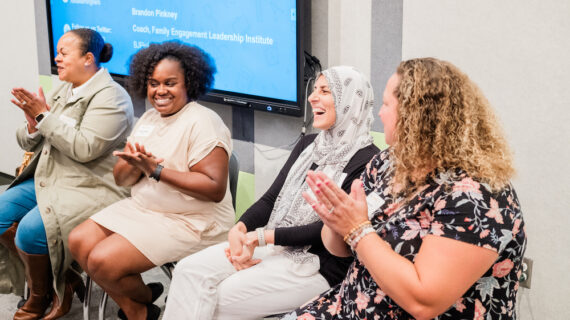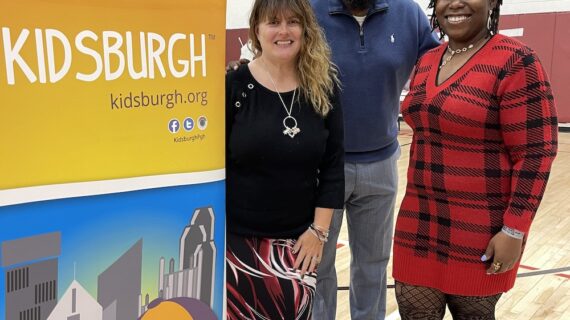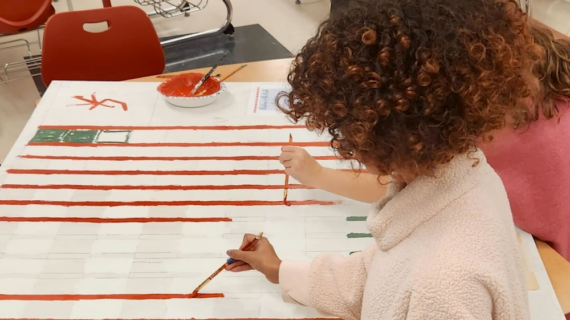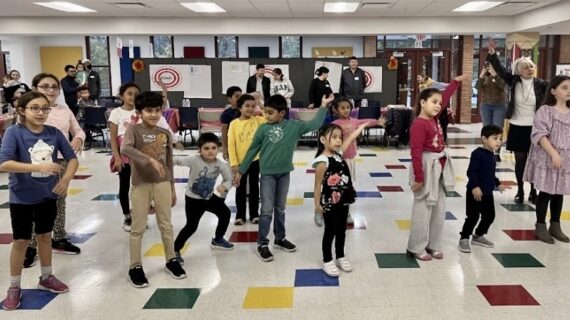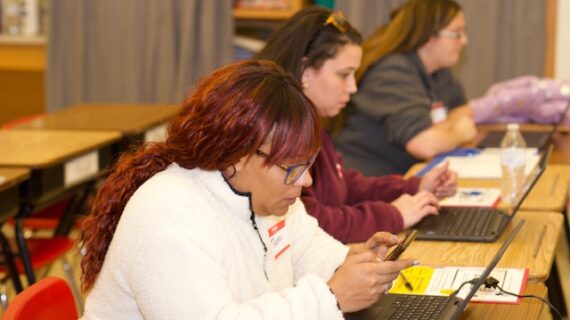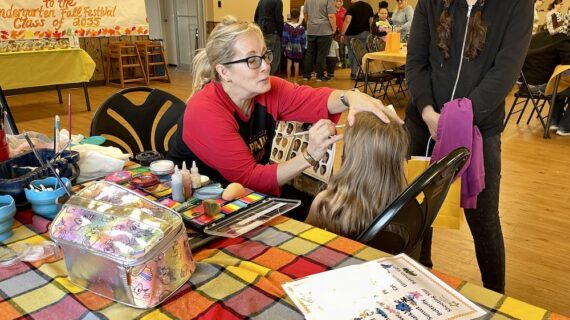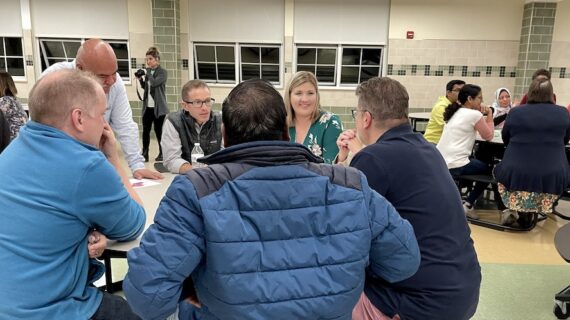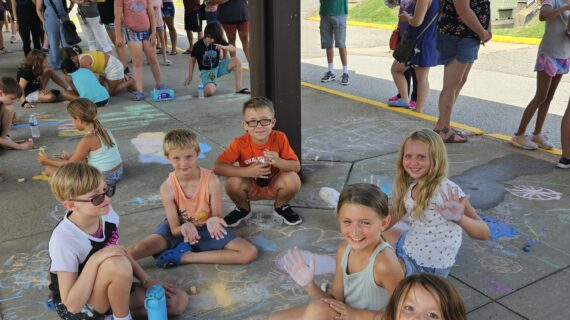
Parents as Allies: How Burrell built family-school engagement through the power of the ‘fireside chat’
Want to gather a group of people together for great conversation and a sense of community? Build a fire. That has been an instinctive human habit for thousands of years.
In the past century, America’s educators have often embraced this tradition by hosting a bonfire to welcome folks back to school in the fall or stoke school spirit.
At Burrell School District, the Parents as Allies team put a more intimate spin on this age-old method of bringing people together, sparking a growing bond between the school and the families they serve.
Parents as Allies (PAA) is a Kidsburgh project designed to build engagement between families and schools. Based on global research by the Brookings Institution, PAA is grounded in the idea that a solid connection between families and schools benefits students, families, schools and whole communities.
Using the principles of design thinking, Burrell’s PAA team was seeking ways to inspire families to connect with the school not just during the occasional sporting event, but all year long and in all contexts – from parent-teacher conferences to personal relationships.
Enter the fire – or, we should say, fires.
WHAT DID THEY TRY?
As a first step, Burrell’s PAA team began hosting a series of “coffee talks” with just a few people at a time. The team’s co-leads (parent Twaina Williams and the district’s director of curriculum and development, Autumn Turk) went out into the community with other team members and school administrators to talk with people.
The team realized, Turk says, that “our big need was to listen.”
So they asked: What was your school experience like when you were a kid? How do you feel about family-school engagement and how would you describe the purpose of K-12 education? What should we be trying to accomplish for your kids?
They made it easy for people to participate by meeting at accessible places like local parks, fire halls, community centers and churches around Burrell, a small, rural community just northeast of Pittsburgh. Part of the magic was that these were small gatherings rather than big town hall meetings – just a handful of folks having real conversations.
It worked. During these conversations, people spoke vulnerably about the need to connect with one another. They talked about the need for families to be back in school buildings in the wake of COVID, even as gathering in big groups indoors still felt a bit worrisome.
Connections were built. People got to know each other.
As they brainstormed a bigger event, Burrell’s PAA team knew that they wanted to preserve that intimacy. That’s when it struck them: A big bonfire can bring out a large crowd, but standing in one big crowd can be an impersonal experience. What if they could offer a whole bunch of tiny fires all in one place, bringing out a big crowd but making it easy to talk in small groups?
So they used PAA grant funding to buy a half-dozen portable fire pits. Burrell’s “fireside chats” were born.
Another thing that made these gatherings unique: They incorporated everyone in the planning, inviting local fire and EMS folks to help design the evening and inviting everyone to volunteer – school board members, parents, teachers, students and anyone from the community who wanted to be involved.
A broad mix of people were invited to be conversation facilitators, hanging out at the various fire pits. They also invited folks to serve as notetakers, capturing suggestions and perspectives shared in each group. And they arranged separate fire pits for middle-schoolers and for high-schoolers, so students could be heard.
Beyond the facilitated discussions, people simply had time to chat.
“It was a fall night,” Turk says, “so it also helped that we provided food, hot cider and hot cocoa to create a cozy environment.”
More than 125 people attended, and seeds were planted that the team has continued growing. Since then, events have included a career fair and ongoing conversations about the goals and purpose of school in students’ lives.
The work of family-school engagement takes time and Burrell, like so many communities, is still working at building trust and connection. But by making space to ignite, as it were, real communication, Turk says, “we’ve started to build relationships.”
WHAT WOULD THEY TELL OTHER SCHOOLS?
- Start small and build trust slowly. It’s important to dream up big ideas for building family-school engagement and have the confidence to take big swings. But first go slow in order to build the trust that good relationships require.
- This work isn’t always easy, but progress comes if you stick with it.
- Check your biases at the door, especially while you’re trying to build trust – even if you thought you didn’t have any.


